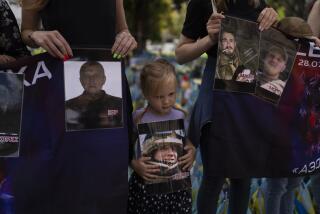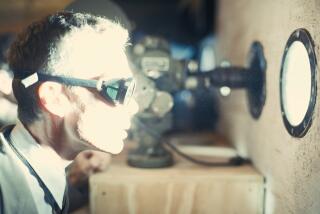Secrets of Chernobyl spill out more than three decades after the nuclear disaster
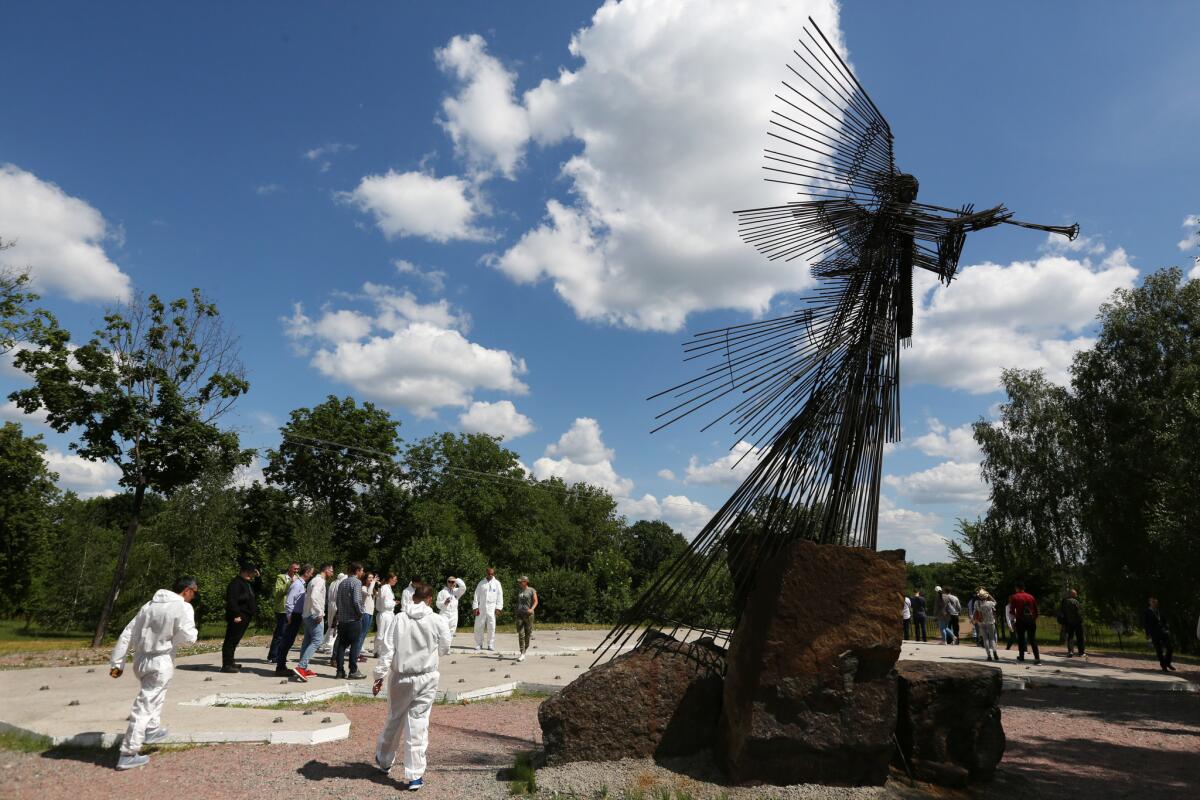
Reporting from Chernobyl, Ukraine â Seated in a jeep and clutching a screeching Geiger counter, Lt. Col. Viktor Chershnev led a convoy of 30 military trucks through the center of sleeping Kiev.
The measuring device was sounding off loudly on that night 33 years ago, not because of the convoyâs cargo â 30 antiaircraft missiles, three of them tipped with nuclear warheads â but because of where and when the post-midnight parade had kicked off: at the Chernobyl air defense missile base just three days after the explosion of a reactor at the adjacent Chernobyl nuclear power plant that had sent enough radioactivity spewing into the air that it at one point had the potential of poisoning much of Eastern Europe.
Chershnev knew that the missiles, the trucks and his crew were badly contaminated and that they should not have been ordered to drive through a city of more than 2 million people. But there was no bypass road at the time â and orders were orders. What Chershnev didnât know in the early hours of the morning of April 30, 1986, was that a radioactive cloud had already caught up with them and blanketed the city on the eve of its annual May Day festivities.
* * *
The reaction to HBOâs recent âChernobylâ miniseries has been almost as far-reaching as the initial tragedy and has spurred a daily line of buses packed with foreign tourists at the gate of the Chernobyl Exclusion Zone, which extends for 20 miles around the plant. But Chernobyl still boasts secrets more than three decades later, including the story of Chershnev and his charges â a saga of dysfunction and disregard for human life that lays bare conditions in the waning years of the Soviet Union.
When the red alert sounded, Chershnev, then the deputy commander and chief engineer of the Kiev Air Defense Brigade, was responsible for the readiness of weaponry and equipment at the Chernobyl antiaircraft battalionâs base in a massive in-ground bunker with 10-inch-thick, rusty metal doors.
These days, the site also features a 10-yard-long missile launcherâs towing trolley, half-buried in silver moss, the former walls of a second smaller bunker surrounded by dense pines and a vast carcass of barracks with missing floorboards, dilapidated walls and a mural of a Soviet soldier cheerfully calling upon comrades to defend the motherland.
Seventy officers and men â ill-informed, unprotected and exposed to deadly radiation â were housed at the site along with the missiles back in 1986, under orders to arduously protect and save the weapons and structures rather than themselves.
The site included the nuclear plant and the Chernobyl over-the-horizon early warning radar station, a 500-meter-long, 150-meter tall installation designed to detect strategic missiles launched from the United States. The now-rusty structure still towers over the area and is a major tourist attraction, a frightening monument to the Cold War that even the complexâs normally fearless marauders have not attempted to cut into pieces to sell as scrap metal outside the zone, a routine business in these parts.
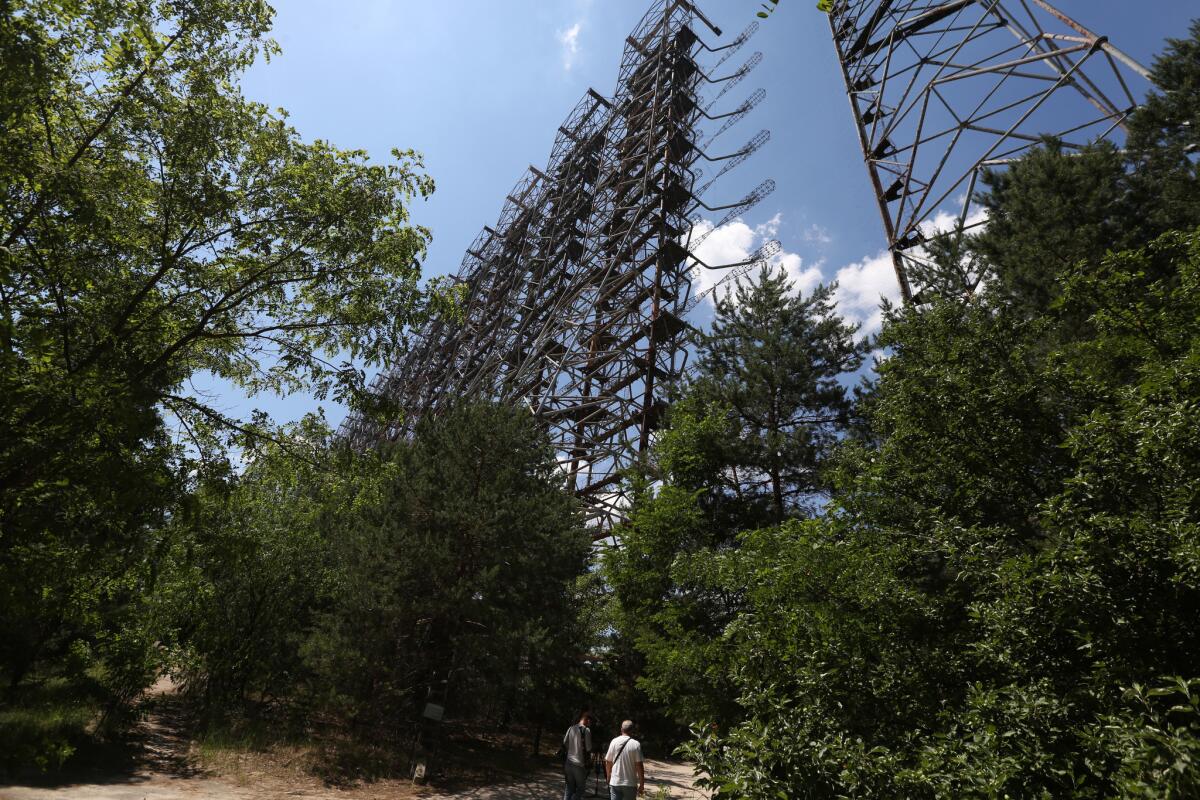
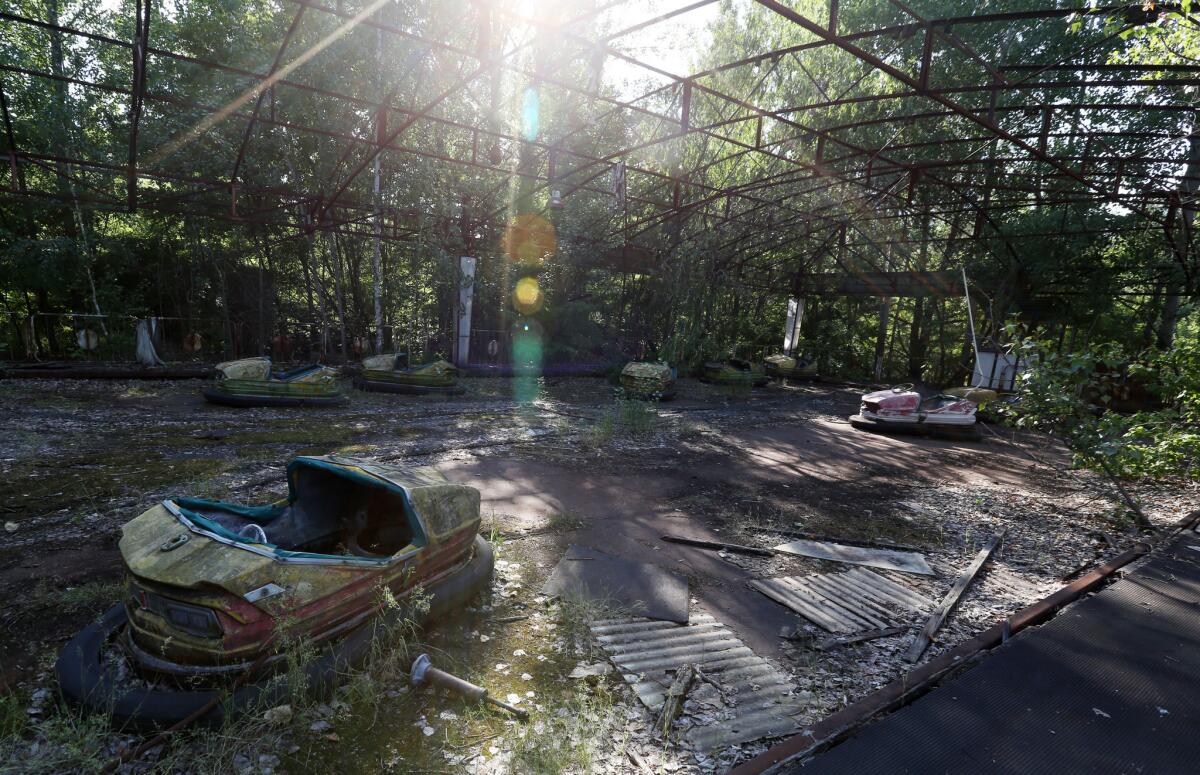
In the aftermath of the 1986 explosion â as the government evacuated more than 50,000 residents from the town of Pripyat, including the families of nuclear plant workers, plus more than 75,000 residents of nearby villages â the men of the Chernobyl air defense unit stayed put until they received fresh orders.
âThree days after the explosion, on April 29, I arrived at the base with 30 heavy trucks and we loaded on them 30 missiles from the storage hangars,â recalls Chershnev, who headed the evacuation effort. âTwenty-seven of them were conventional, but the other three were tactical rockets with nuclear warheads. We were to take them to a facility outside Boryspil, near Kiev.
âAfter that, we were ordered to go back and salvage the remaining equipment that could be dismantled.â
The men traveled â without protective gear â for 14 hours at speeds lower than 20 mph as radiation from the explosion leaked into the air.
Chershnev admits he knew the dangers but says he was a career officer and could not disobey orders.
They reached Kiev, about a 100-mile drive from the Chernobyl plant, in the middle of the night and rode through the city and across the Paton bridge for 20 additional miles to Boryspil without alerting anyone or taking safety precautions.
âWhen we arrived at the designated base near Boryspil, we unloaded the rockets and all we got as preventive medicine was two bottles of red wine for each officer â the drivers got nothing,â he said. âThe rockets came first, men second as usual. The nuclear warheads were immediately dismantled and taken to another place by a special team.â
Chershnev and his men quickly returned to Chernobyl to pick up six rocket launchers, parts of the command guidance station and other equipment that the remaining base personnel had disassembled. All in all, they made three trips back-and-forth to haul away most of the facilityâs equipment before they were evacuated, though many stayed at the contaminated base for two to four more weeks to keep watch, Chershnev said.
âDue to the Chernobyl catastrophe, the Soviet Unionâs strategic defenses were dealt a major blow, as they were rendered blind in the West flank by the closure of the Chernobyl early warning station due to lack of power and air protection,â said Chershnevâs former comrade-in arms, retired Lt. Gen. Igor Romanenko, the former deputy chief of the Ukrainian general staff.
âThe strategic defense installation was one of the two key elements of the Soviet Unionâs antimissile defenses,â Romanenko said. âThe other one was in the far east, so all of the central, southern and western U.S.S.R. became exposed to missile attacks.â
This was a heavily guarded secret at the time, he said.
The rocket system in place at Chernobyl was the S75-4M, a modernized version of the system that shot down American pilot Francis Gary Powersâ U-2 spy plane in 1960, Romanenko said. âIts tactical nuclear warhead modification is intended to destroy a cluster of planes and rockets or a heavy bomber,â he said.
Romanenko, who in 1988 assumed command of the Kiev Air Defense Brigade, also confirmed that the battalion that evacuated from Chernobyl had nuclear-tipped missiles in its arsenal.
âThey were to be used only in case of clear danger of nuclear attack,â he said in an interview. âIt worked like this: The decision was to be made in Moscow. Moscow would send me, as a brigade commander, a coded message to set the nuclear-headed missiles in a combat position. Then I was supposed to receive another coded message authorizing the launch. And only then would I issue an order to the commanders of my battalions to push the button.â
Required to be beside him in the control room prior to such a launch would be a special task officer sent by Moscow whose job it was to ensure that the commander obeyed orders. That man was always armed.
âIf I ignored the order, refused to carry it out, the officer was instructed to kill me on the spot,â Romanenko recalled with a smile.
At Boryspil, Cherschnev and his men spent days and nights on end scrubbing their radioactive equipment and trucks with special powder.
âMy men washed the ⌠stuff with the hardest brushes ever until they were falling over with fatigue and with bleeding blisters on their hands, but nothing helped,â said Chershnev. âWe kept measuring the radiation and it was still the same, still high.â
Moscow then ordered the trucks back to Chernobyl to be left in a so-called cemetery for dirty vehicles, helicopters and other equipment.
âBut they told us to keep the system parts, the rockets and the launchers at the base near Boryspil,â he said.
After what he calls the âoperation in futilityâ concluded, Chershnev said he burned his uniform, boots, hat and underwear behind the barracks.
The soldiers were discharged while the officers continued to serve in various units. They never really knew how much radiation they were exposed to, Chershnev said.
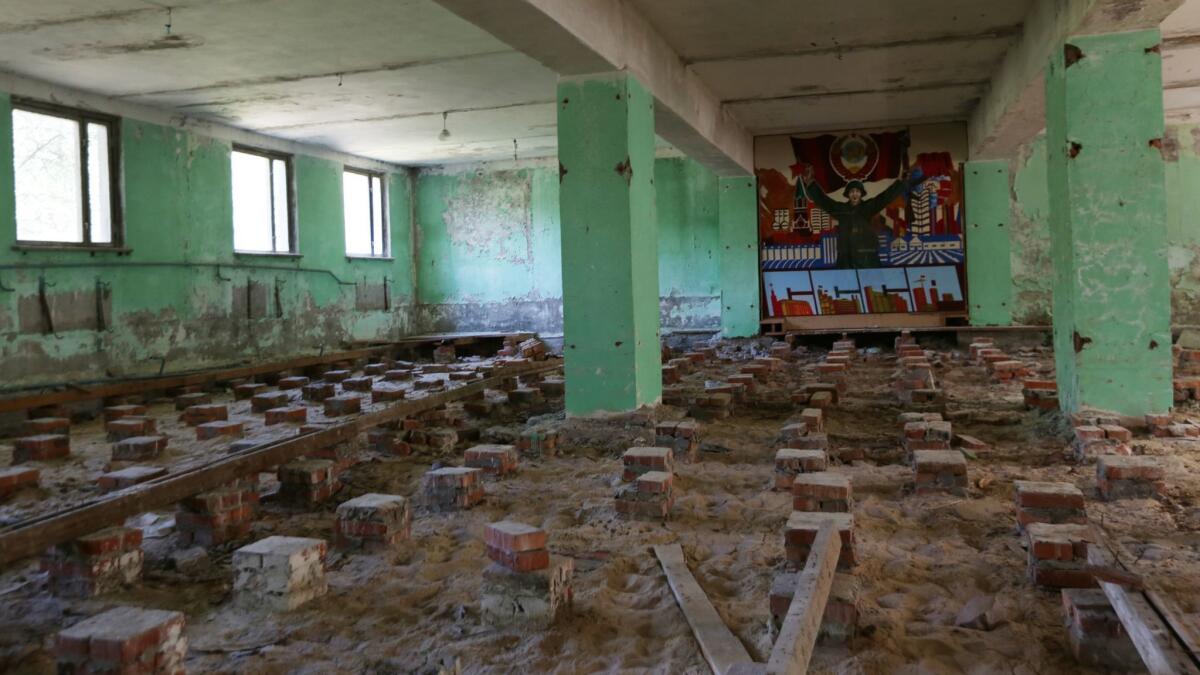
Three years later, a commission of civilian and military experts came from Moscow to see if the rockets and the rest of the equipment could be reused. Prior to the groupâs arrival, everything was again washed and scrubbed for several days, Romanenko said.
The experts âmeasured all the stored hardware and rockets brought from Chernobyl and their counters went mad!â said Romanenko. âThey told us we were crazy to keep this stuff at the base, told us to get rid of it as soon as possible and then left in a hurry. For three years the contaminated hardware had been kept in the area of the unit!â
When Chershnev got back from that trip, he repeated the ritual of burning his uniform.
âNo one in the world knows that we existed and what we went through,â he said. âAnd all for nothing. All so stupid and futile. We didnât save anyone. We didnât clean up anything.
âAll those I personally know and have kept track of all these years are either badly sick like myself or dead by now. My driver who accompanied me on all the convoys was discharged and died at 28. My fellow deputy brigade commander, ⌠who was also dealing with contaminated equipment, died [in 1995] of cancer. Warrant Officer Petro Pozyura went blind. And so on and so forth. I have a heart ailment and every year spend a couple of weeks in hospital.â
The cardiologist who has been treating Chershnev for the last few years once asked him to retrieve his Chernobyl-era medical records from the military. But Chershnev was told that the records no longer exist.
âHere I am on a pension with a monthly Chernobyl health compensation of about $11 a month,â he concluded bitterly. âIt is not even enough to buy a bottle of decent vodka, let alone medicines.â
The official death toll related to the explosion is listed as 39, but out of the officially registered 3.2 million people who were exposed to radiation in Ukraine alone, 1.3 million have died in the last 33 years, said Vladimir Kobchik, a former Chernobyl cleanup worker who is now a leader of a group that aims to protect the rights of fellow survivors.
âFor the last four years, the government of Ukraine has been allocating $70 million annually for the needs of the affected. That is $37 per person per year! Not a penny more! How many of those remaining 1.9 million people affected by Chernobyl are sick [and] we canât even tell? The doctors will never tell you you are sick or dying because of radiation.â
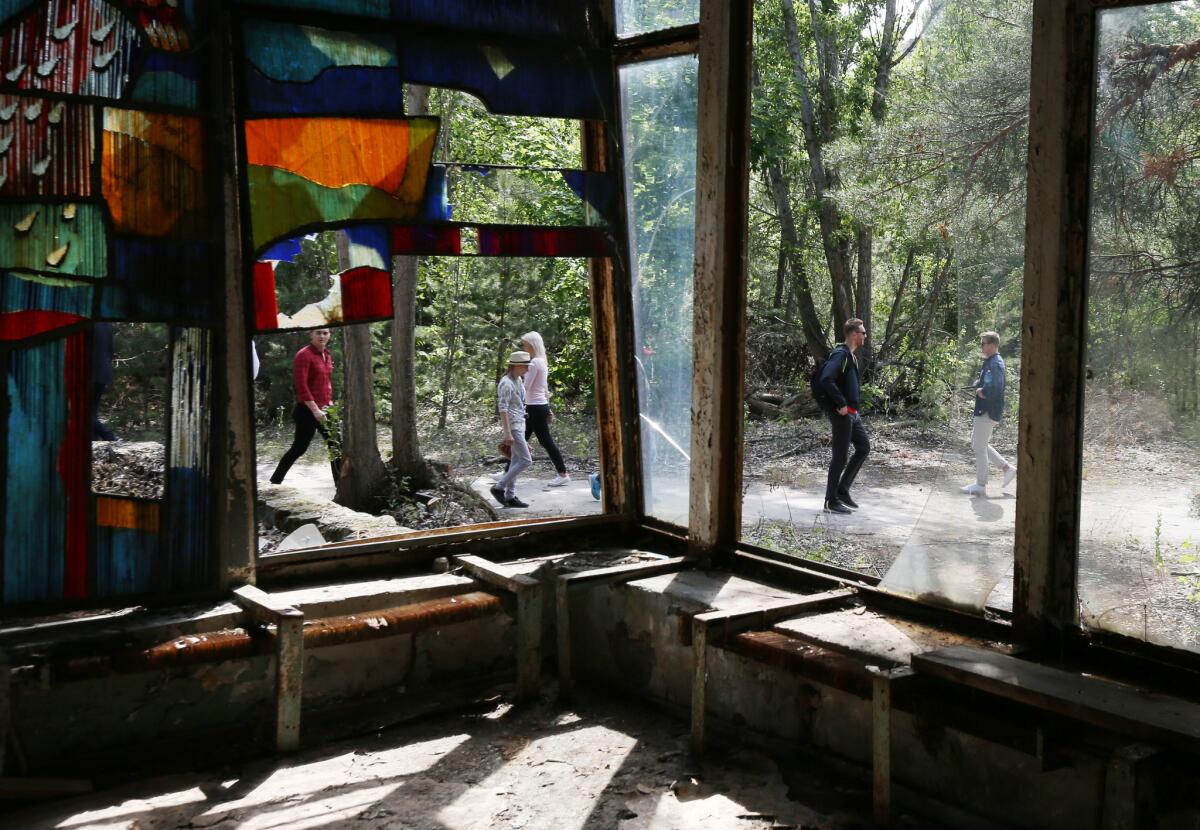
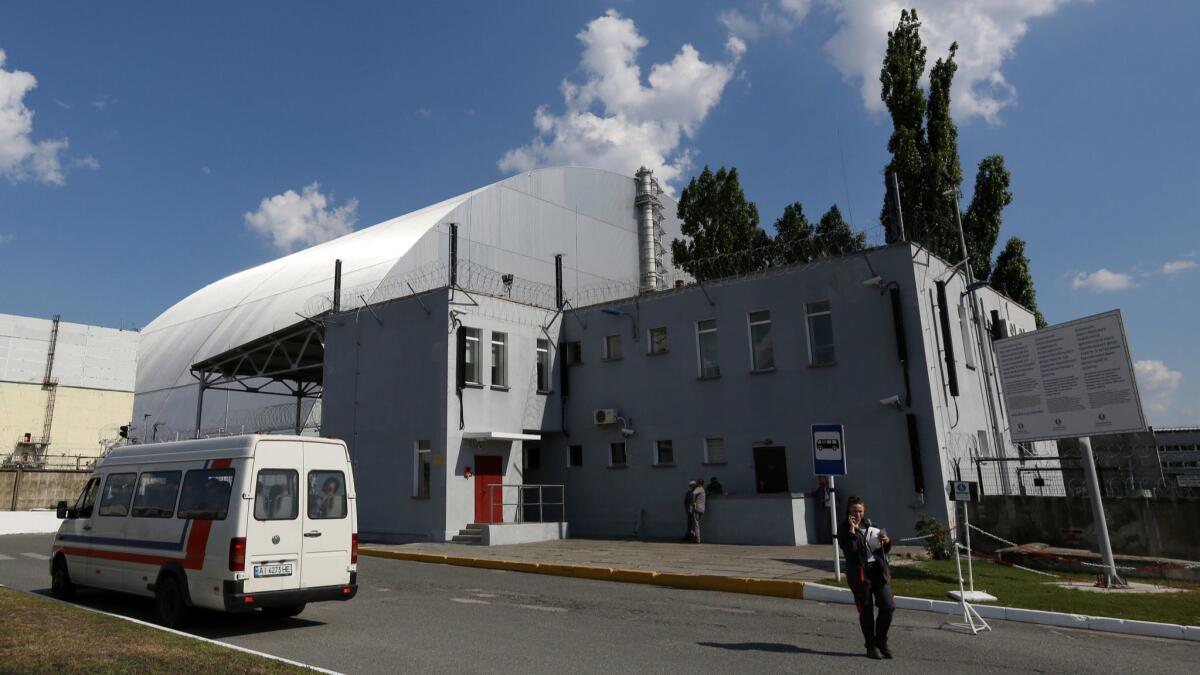
* * *
Chernobyl guides never take visitors to the former antiaircraft base. It is off-limits across an overgrown field and dense pine forest.
After a recent tour of the zone, a group of Danish tourists emerges from the gates of Chernobyl and their bus is thoroughly checked for radiation. Each tourist receives an individual radiation test as well. All of them are found âcleanâ; same as the bus. Tired but happy, they can go back to Kiev and fly home.
âNow I clearly see that humans are the most stupid thing ever brought to Earth,â said Rasmus Schegellrup, a 32-year-old shipbuilder from Copenhagen, as his friends were buying expensive Chernobyl souvenirs and cold drinks at a kiosk next to the zoneâs gate. âWe keep inventing things that donât make the world better and we are discovering things that will destroy us easily and that is completely insane, isnât it?â
âMost tourists are very grateful for the unique experience,â their guide, Alexander Domashenko, said. âThey are really impressed by the heroism of the cleanup workers who prevented the disaster from poisoning the rest of Europe for centuries to come. They love to make selfies in front of the sarcophagus that covers the damaged reactor.â
Look Back | Chernobyl, 30 years after nuclear power plant disaster Âť
More to Read
Sign up for Essential California
The most important California stories and recommendations in your inbox every morning.
You may occasionally receive promotional content from the Los Angeles Times.
